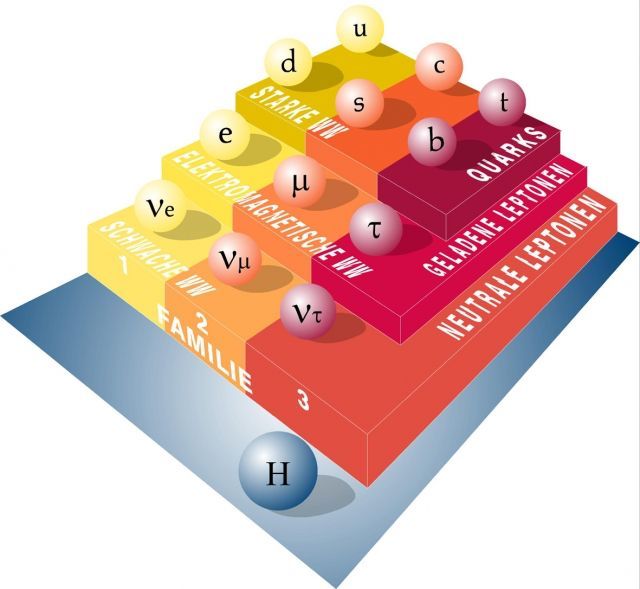Three families with unequal masses
The matter known to us consists of two quarks (up quark and down quark) and the electron. In order to explain the structure of our world, physicists make use of a number of additional elementary particles, which are produced in laboratories or found in the radiation descending on Earth from the cosmos. One of them is the neutrino. The neutrino belongs, like the electron, to the group of the so-called leptons. The up quark, the down quark and the two leptons – electron and neutrino – are generally put together into a family (in yellow in the graph). Alongside, physicists know two additional families (represented in orange and red in the graph), each with two quarks and two leptons, but with heavier masses. The three particle families have in total twelve members – these are our known matter particles.
All these particles have no measurable size and, provided that they are of the same sort, are totally undistinguishable from each other. All elementary particles can be created (transformation of energy in matter) and annihilated (transformation of matter in energy). This is a fundamental element of modern physics. For in classical physics the sudden appearance or disappearance of massive bodies was excluded.


